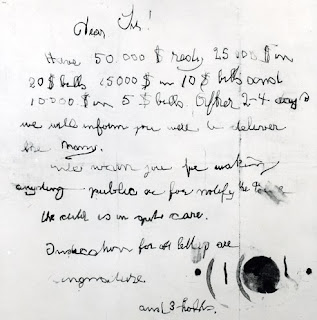Crossed in Translation
Cross-linguistic transfer, native language interference, and interlanguage errors are some of the terms for referring to the concept that users of particular languages have characteristic production patterns when using a second language. Cross-linguistic Influence (CLI) refers to the concept that language learners will rely on experience from their L1 to compensate for weaknesses in their target language. All native language analyses rely on the theories central to CLI: That a person’s L1 is their strongest and so they will rely on that language’s structure to compensate for weaknesses in their L2. When the L1 and L2 have different language structures, the resulting language may contain cross-linguistic transfers.
To use a metaphor: Those cross-linguistic transfers are as if a target language’s skin is stretched over the native language’s skeleton. The message may still be understood, but the delivery is unnaturally forced; the degree of unnatural depending on the differences of skin and skeleton. For example, cross-linguistic transfer describes such phenomena as native English speakers using Spanish with adjective-noun word order, where Spanish demands noun-adjective word order. Of course, like taxidermy skill, second-language education and experience will have an effect on the appearance of transferences. With an increase in L2 fluency, the "unnaturalness" of transferences is expected to decrease.
There are two categories of cross-linguistic transfer: positive transfer or negative transfer. Transfers that do not result in linguistic errors or misunderstanding are described as positive transfers. Positive transfers occur primarily in cases where the L1 and L2 have similar language structures. Positive transfers are relatively difficult to identify, so most research in CLI concerns negative transference. Negative transfers, or interferences, result in erroneous or nonstandard language. Negative transfers are observed in cases where the L1 and L2 have different language structures. The parts of speech affected by negative transfer vary depending on the specific structural differences between L1 and L2.
Analyzing these structural differences may indicate the L1s that inspire them and provide more quantifiable data to use in building the demographic profile of an anonymous author. One potential source of that kind of data is the World Atlas of Language Structures (WALS), a database of language structures compiled by linguists, which contains an index of the structural properties of thousands of languages.
Several studies have used various methods of computational linguistic analysis to demonstrate that the types of cross-linguistic transfers produced in L2 English are predictable according to the writer’s L1. For this reason, language structure differences are considered in Native Language Analysis (NLA) and L1 structure data are included in the NLA feature catalogue. The hypothesis central to my thesis is that analyzing language transfer features can reveal linguistic structural differences and that those can be used to determine a shortlist of languages that might be behind them.
To use a metaphor: Those cross-linguistic transfers are as if a target language’s skin is stretched over the native language’s skeleton. The message may still be understood, but the delivery is unnaturally forced; the degree of unnatural depending on the differences of skin and skeleton. For example, cross-linguistic transfer describes such phenomena as native English speakers using Spanish with adjective-noun word order, where Spanish demands noun-adjective word order. Of course, like taxidermy skill, second-language education and experience will have an effect on the appearance of transferences. With an increase in L2 fluency, the "unnaturalness" of transferences is expected to decrease.
There are two categories of cross-linguistic transfer: positive transfer or negative transfer. Transfers that do not result in linguistic errors or misunderstanding are described as positive transfers. Positive transfers occur primarily in cases where the L1 and L2 have similar language structures. Positive transfers are relatively difficult to identify, so most research in CLI concerns negative transference. Negative transfers, or interferences, result in erroneous or nonstandard language. Negative transfers are observed in cases where the L1 and L2 have different language structures. The parts of speech affected by negative transfer vary depending on the specific structural differences between L1 and L2.
Analyzing these structural differences may indicate the L1s that inspire them and provide more quantifiable data to use in building the demographic profile of an anonymous author. One potential source of that kind of data is the World Atlas of Language Structures (WALS), a database of language structures compiled by linguists, which contains an index of the structural properties of thousands of languages.
Several studies have used various methods of computational linguistic analysis to demonstrate that the types of cross-linguistic transfers produced in L2 English are predictable according to the writer’s L1. For this reason, language structure differences are considered in Native Language Analysis (NLA) and L1 structure data are included in the NLA feature catalogue. The hypothesis central to my thesis is that analyzing language transfer features can reveal linguistic structural differences and that those can be used to determine a shortlist of languages that might be behind them.

Comments
Post a Comment